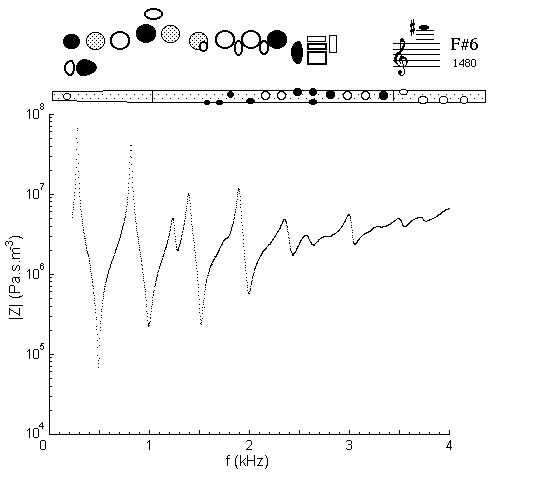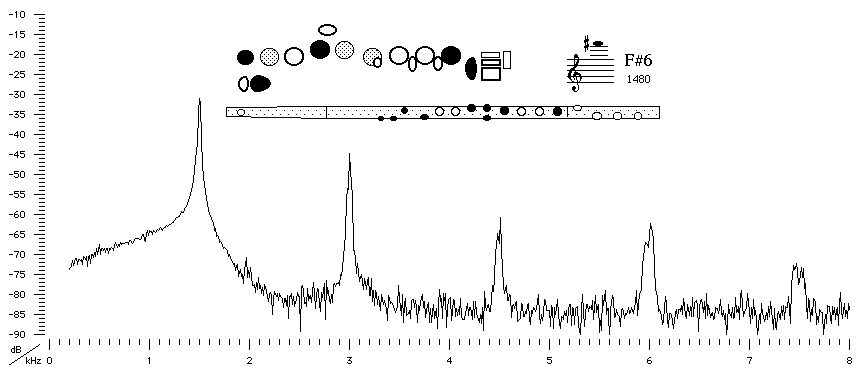| Acoustics of baroque, classical and modern flutes |
modern flute
|
F#6 |

|
Fingering Acoustic schematic Non-specialist introduction
to acoustic impedance |
This fingering is comparable to that for F#4 except for the use of the holes operated by the LH middle finger key as a (double) register hole. This creates a pressure node (or flow antinode) about three quarters of the way along the pipe. Comparing this with the F#4 impedance spectrum, we see that the fourth minimum (the one that plays F#6) is deeper. The third is extremely shallow and unplayable. The first minimum plays ~B4 and the second ~B![]() 5 but, because it is a cross fingering for these notes, their timbres are darker. Combinations of these three notes may be played simultaneously as multiphonics. Often unintentionally: F#6 is notorious for being hard to play softly with confidence. Its minimum is not as stable as that for, say F6, but worse, the minimum at ~B5 is well supported by another at ~B6.
5 but, because it is a cross fingering for these notes, their timbres are darker. Combinations of these three notes may be played simultaneously as multiphonics. Often unintentionally: F#6 is notorious for being hard to play softly with confidence. Its minimum is not as stable as that for, say F6, but worse, the minimum at ~B5 is well supported by another at ~B6.

Sound spectrum
of a modern flute with a B foot played using fingering for F#6.
![]()
![]()
![]()
![]()
![]() You can hear F#6
played by Geoffrey Collins.
You can hear F#6
played by Geoffrey Collins.
| Acoustic measurements are available for these flutes - modern B, modern C, classical C, classical D, classical flared, baroque Sound clips are available for modern B, classical flared and baroque |
To compare flutes, it is easiest to open a separate browser window for each instrument. |